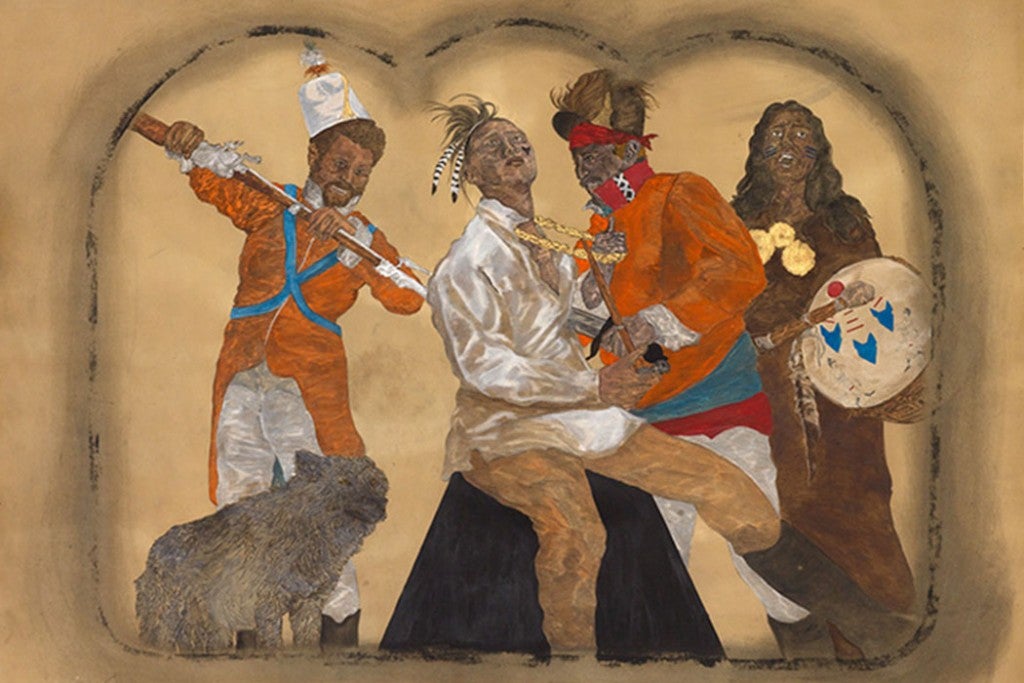Recent scientific studies featured in BBC News and Physics World investigate the physical potential of time travel. In these scenarios, no time machine is present, leaving the examination entirely to physics. With the popularity of shows like Outlander and movies like Project Almanac, Hot Tub Time Machine 2, Predestination, and About Time, time travel continues to be a topic of fascination for storytellers, audiences, and artists alike.
Painter Frohawk Two Feathers applies the art of time travel to his fictitious world of the past, and in doing so, our alternative futures. His current show Kill Your Best Ideas, The Battle for New York and its Lifeline, the Hudson River runs at the Hudson River Museum in Yonkers, NY through mid-May. Continuing to detail an original, ongoing epic, Two Feathers summons an imagined past where England and France have united to become “Frengland.”
Much like the current studies in physics, Two Feathers’ work does not rely upon a physical time machine. But he does toe the time-space continuum as he rewrites and recreates the past in his unique “midtopic” way, creating an alternative world that falls in the liminal space between utopia and dystopia. He populates this re-imagined space with his contemporary, living friends, who pose for him, acting out the atrocities and victories of history.
In some ways, Two Feathers’ reworking of the past is on par with “mental time travel,” which Michael Corbalis explains in Análise Social as a “notion of generating future episodes based in part on past ones … implying a continuity of time from past through present to future, and the notion that we can mentally traverse the time dimension.” In Corbalis’ analysis, man’s episodic memory allows him to remember and process the past, thus learning from, planning for, and shaping future events.
Rudyard Alcocer examines time travel literature in his book Time Travel in the Latin American and Caribbean Imagination, seeking out why, when, and to what end it was popular. He has a theory: “Occasionally, the only possible remedy for historically profound social ills seems to lie in—or be informed by—the fictional mechanism of time travel. A related notion is that however difficult this may be to ascertain or measure, fiction can provide templates for the actual creation of a different world.”
Two Feathers commented on this, saying:
Initially I began this series out of a desire to find the parts of my identity that I felt was missing. Later on, it became a crusade to tell the history of marginalized people throughout the globe. However, at its core the oeuvre lives and breathes in the present. It speaks to the now via the past and presents the collective ‘we’ with a vision of a future that will come true or not depending on how the record is processed.
Through the twists and turns of his Frenglish saga, viewers can time travel with Two Feathers as their leader, in order to question the past and shape the future in the ultra-present now.







